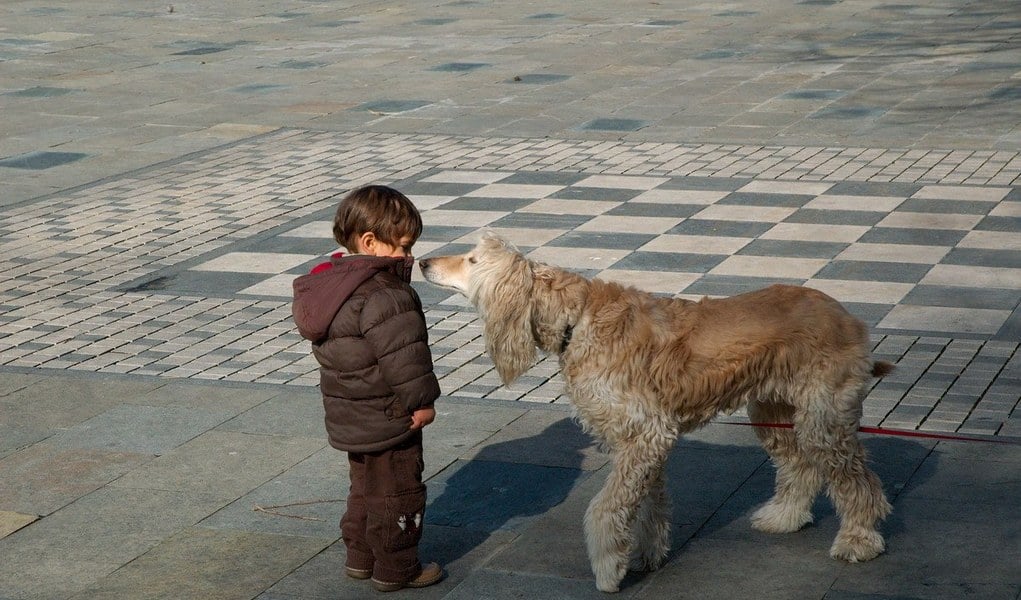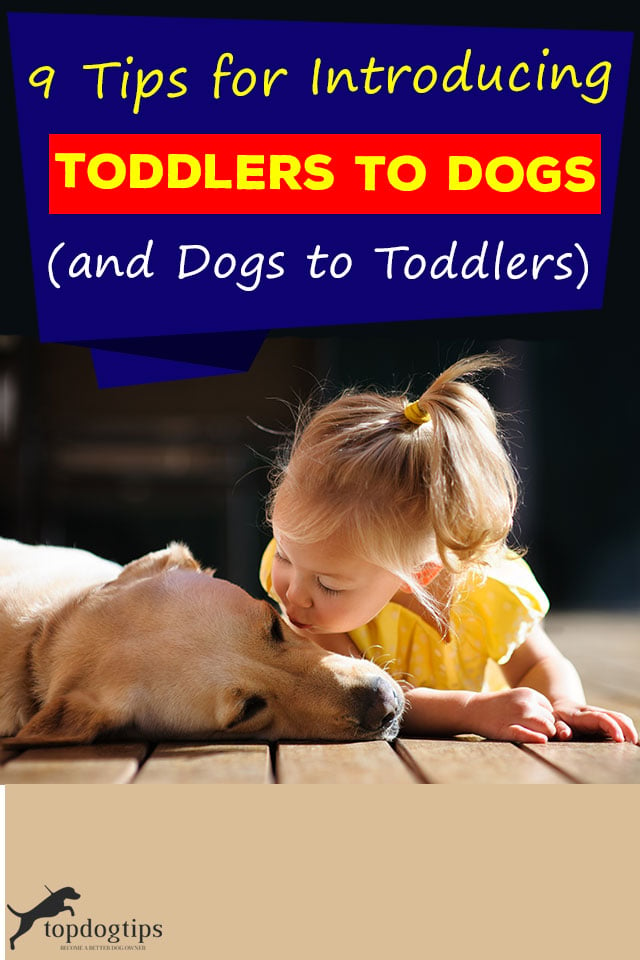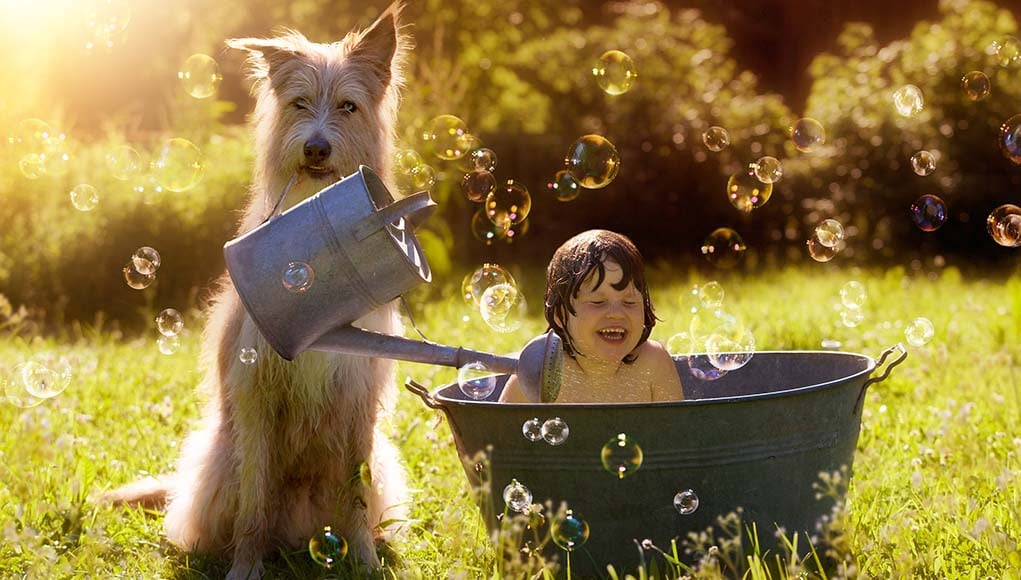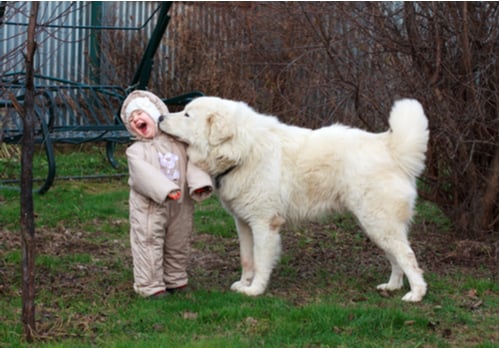There’s nothing cuter than seeing a puppy and a kid playing together. However, the situation is not always ideal. To avoid problems and build a healthy relationship from the very beginning, it’s absolutely crucial that you introduce your dog to a toddler the right way. Here are some useful tips on how to do that.
Table of Contents
1. Make an Informed Choice
Assuming that you’re introducing a new dog to your already existing family, it’s important to make a wise choice. If possible, it’s always better to get a puppy than an adult dog. Dogs who grow up together with children will have an easier time adapting and be more patient and accepting.
Another thing to consider is the breed. Some dog breeds are naturally more tolerant, and get along with children better. The safest breeds include Poodles, Golden Retrievers, Labrador Retrievers, and Bull Dogs, thanks to their calm demeanor. Some breeds that might not be a good fit include Rottweilers, Malamutes, Terriers, and any kind of hunting or herding dogs.
Finally, take into consideration the character and previous history of behavior of the individual dog you are considering adding to your family. If the dog has had any aggressive tendencies, maybe he’s not the right fit. On the other hand, adult dogs who have already lived with children without issues could prove to be the right choice.
2. Train the Dog
Before you introduce your puppy to your children, try getting him used to the way children behave. You can try being a little noisier than usual, for instance. When you are petting him, you can be a little bit rougher, maybe pulling on his fur a little bit. Whenever your dog exhibits patience at such behavior, reward him with a treat.
A dog should also be trained to obey basic commands, such as “sit”, “leave it” and “stay”. In dangerous situations, there’s no command more important than emergency recall. It’s the command that should be so strong it overrides all of your dog’s instincts and makes him come to you no matter what he is doing. It’s an important and necessary precaution in case your dog attacks your baby.
3. Explain the Ground Rules to Your Kids
Toddlers perhaps don’t yet have the capacity for complex explanations and a whole lot of empathy, but they should be able to understand and follow a few simple rules. Your task is to explain, in a way your child is capable of understanding, that a dog is not a toy.
Let your child know, in clear terms what he can and cannot do. Some important things to convey are, for example: don’t pull the dog’s fur or tail, stay away from the dog’s mouth, and leave him alone while he’s eating.
4. Give the Reins Over to the Dog
When it comes to first meetings, you should let the dog explore at his own pace. He should be the first one to approach the child. Let him sniff his way around the room and the baby. The child should also be taught to respect the dog’s need to be alone when he decides to retreat.
5. Supervise Constantly
Never leave your toddler and your dog unsupervised, regardless of whether your dog has ever shown aggressive tendencies. Even smaller dogs are capable of hurting a child, and you never know what their playing can turn into. Leaving them together unsupervised is the equivalent of leaving two toddlers alone in a situation where they could potentially get hurt.
6. Use Time-outs
Time-outs are a super useful tool that can be used on both your children and your puppy. If one of them misbehaves, he should be removed from the other’s presence for a while. With dogs, you can also reinforce good behavior with treats. Both dogs and toddlers learn well through repetition, so be consistent.

7. Include Your Child in Dog-Related Activities
One of the most important steps in building a healthy relationship between a dog and a child is the routine. While toddlers can’t be of too much help when it comes to taking care of your dog, you can include them by having them with you at all times, and giving them small and easy tasks to do supervised.
Most notably, you should always take your toddler on your dog walks. Just the constant presence will help the both of them get used to each other. If you let them play together, make sure that there is no roughhousing. Forget the old mantras of “They’re just playing” and “My dog would never hurt anyone”. Aggressive games can get out of hand easily, and the dog could hurt the baby without intending to, so it’s best to be on the safe side.
8. Prevent Jealousy
The arrival of a new family member – be it a puppy or a baby – is a happy but also confusing time. Jealousy is usually quick to appear in situations like these, and it’s up to you as an adult not to feed into it.
Don’t be unfair and turn all of your attention towards either the puppy or the baby, while dismissing the other. This is likely to cause jealousy issues, and those can be pretty dangerous when a dog and a toddler are involved.
9. Seek Help If You Notice Problems
You should be quick to react at the first sign of trouble – meaning aggressive behavior from the dog. If your dog is growling at the kid constantly, or exhibiting any other signs of aggression, it’s time to ask for advice.
The best person to turn to is normally your vet, or a dog behavior specialist. Don’t hope that the behavior will just go away on its own – it usually just escalates, and the safety of your children is at stake.
Conclusion
It might take some work and patience, but once your dog and your child get used to each other, the results will likely be beautiful. Having a dog in early childhood will help your child grow up to be more responsible and empathetic. Not to mention, this friendship will probably turn into a lifelong love of animals.
READ NEXT: 13 Tips for Introducing a Toddler to a Dog
Want To Share This?















